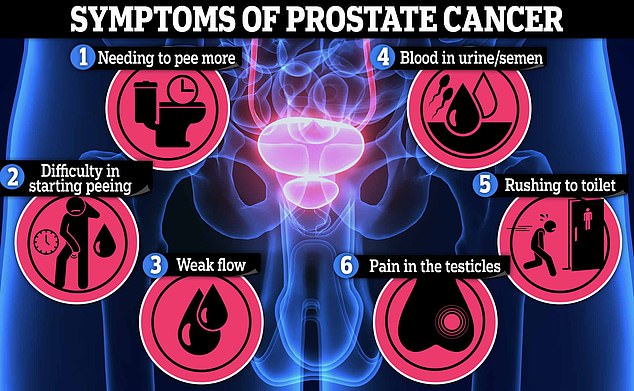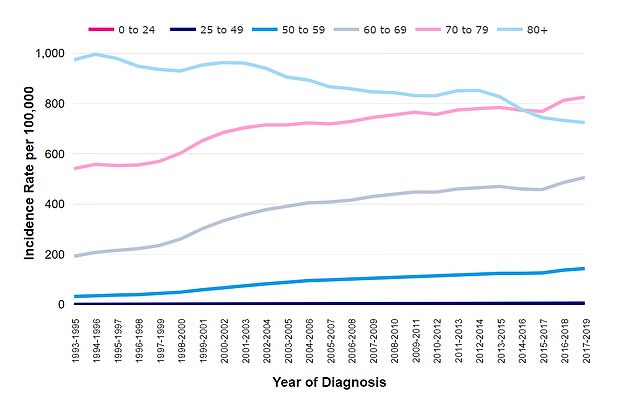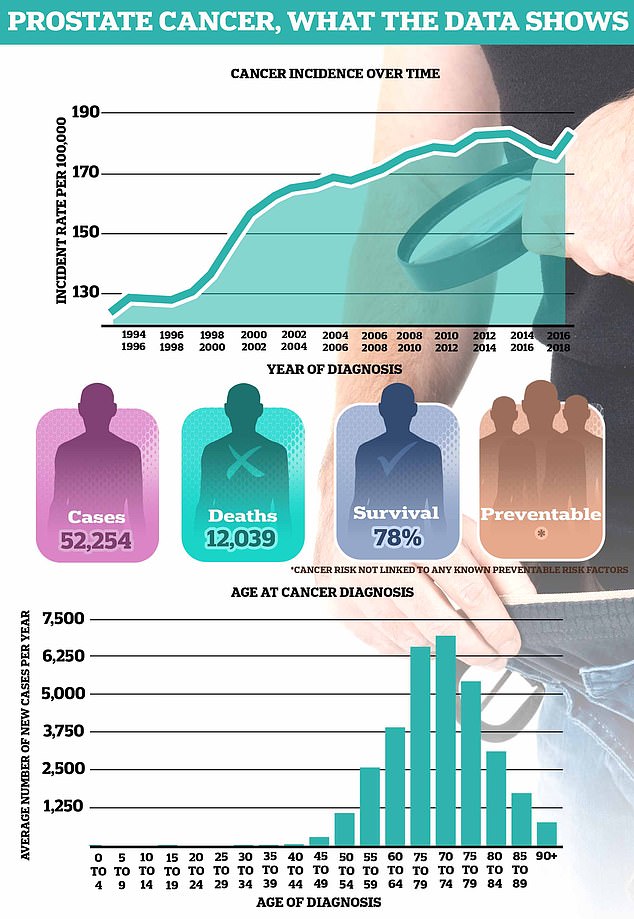Can cycling cause prostate cancer? Experts reveal the truth – as Olympic cycling hero Sir Chris Hoy reveals his terminal diagnosis aged just 48
Can cycling cause prostate cancer? Strange as it may sound, that was a question asked when cycling hero Sir Chris Hoy revealed he has an aggressive form of the disease.
The 11-time Olympic gold medalist, who is just 48, announced this weekend that he has ‘two to four years to live’ – with fans taking to social media to express their shock and sadness.
Others simply wanted to know why someone who is relatively young and apparently fit and healthy could be affected by a disease normally associated with older men.
On
He added: ‘Given Chris Hoy’s terminal prostate cancer, when will the Government tackle this issue?’
British cycling legend Sir Chris Hoy has revealed at the age of 48 that he has incurable prostate cancer and may have two to four years to live.

Scientists have been investigating the relationship between prostate cancer and cycling for more than ten years. The photo shows Sir Chris participating in the platinum anniversary pageant in 2022
Another user simply asked: ‘Is there any link between long-term cycling… and getting this type of cancer?’
About one in ten adult men cycle – twice as many women – and it is most popular among people aged 50 to 60, the age when prostate cancer starts to become a problem.
So all of this may have made worrying reading for some. But what is the truth?
Scientists have also long been concerned that cycling could affect the prostate, because bicycle saddles put pressure on the perineum – the bottom of the pelvis, between the legs.
This in turn can irritate the prostate, due to the location of the gland – which helps the body produce sperm – which is in the pelvis, directly below the bladder.
Researchers have found that cycling can increase levels of prostate-specific antigen (PSA) in blood tests.
This compound is released by the prostate and if levels are higher than normal, it could be a sign that something is wrong with the gland.
Some studies have found that periods of cycling peak for up to 48 hours.
There are also indications that regular cyclists are more likely to suffer from prostatitis – the medical term for inflammation of the prostate.
However, neither prostatitis nor elevated PSA levels in themselves are signs that someone has prostate cancer, nor are they known to increase the risk of the disease.
In 2014, a University College London study found that men in their 50s who cycled more than nine hours a week were five times as likely to develop prostate cancer as men who cycled less often.
Researchers looked at data from more than 5,000 cyclists and also found an increased risk if men of this age cycled just over 3.5 hours per week.
But later studies, such as a 2020 article published in the Journal of Clinical Urology Based on data from 8,000 male cyclists, we were unable to find a link between cycling and an increased risk of prostate cancer.

And other research has even suggested that cycling can help ward off the disease.
One such study, published earlier this year of more than 50,000 men, found that men who exercise regularly, including cycling, have a lower risk of prostate cancer compared to those who do not.
The Swedish study, published in January, found that men who regularly exercise cardiovascular exercise had a third lower risk of developing prostate cancer.
The authors of the worrying 2014 University College London study went so far urge men to continue cycling because of the wider benefits to their health.
‘We do not advise people to reduce their cycling volume. Cycling has many physical and mental health benefits that currently outweigh any risks it poses,” they wrote at the time.

This CRUK graph shows the incidence of prostate cancer over time among different age groups, with older men still most likely to develop the disease, while disease rates among younger men have increased dramatically since the 1990s.
Regular exercise is an established habit in the fight against cancer.
Not only does it combat obesity, where excess fat increases the risk of cancer in general, but exercise also produces hormones that can help reduce the chance of cancer appearing or growing.
British cancer charity Cancer Research UK (CRUK) says there are no known lifestyle factors that increase a man’s risk of developing it during his lifetime.
This is not to say that there are not factors that increase the risk of developing the disease, but these are unchangeable, such as family history or ethnicity.
For example, the risk of prostate cancer is generally higher among black men than among men from other backgrounds.
As with most cancers, it is usually impossible to determine what exactly causes a specific case of prostate cancer in an individual.

On average, more than 52,000 men are diagnosed with prostate cancer every year in the UK, making it the most common form of cancer in men. About 12,000 men die from the disease every year – the equivalent of one man every 45 minutes
CRUK data shows that around 55,000 cases of prostate cancer are diagnosed in Britain every year, equivalent to around 150 men per day in Britain.
Prostate cancer is the most common cancer among men in Britain, with men in their late 70s most likely to be diagnosed with the disease: 825 cases per 100,000 men.
However, the number of cases of the disease among young groups has increased dramatically since the 1990s, for reasons scientists are still unsure of.
Among men aged 25 to 49, rates have risen by more than 600 per cent over this period, matching Sir Chris’s, the biggest increase of any group.
However, the baseline level among young men remains low: just six cases per 100,000 men at this age, compared to one case per 100,000 in the 1990s.
Rates among those in their fifties have risen by about 350 percent to about 150 cases per 100,000 men and by 163 percent in the 1960s to about 500 cases per 100,000 men.
Prostate cancer is very treatable if caught early. Overall, 9 in 10 men with the disease will survive for five years or more, and eight in 10 for a decade.
The outlook is much less positive for advanced prostate cancer, with survival dropping to one to three years.
It is noted that in younger men, in terms of cancer diagnoses, prostate cancer in people under the age of 50, like Sir Chris, is much more likely to be diagnosed at an advanced stage.
This may be due to a lack of awareness of possible symptoms that delay them in seeking help, or to clinicians not initially suspecting that problems could be caused by prostate cancer in someone so young, leading to a delayed diagnosis.
A total of 12,000 men die from prostate cancer every year in Britain.
Symptoms of prostate cancer include having to urinate more often, often at night, having to rush to the toilet to urinate, having difficulty urinating, taking a long time, or feeling that your bladder is not empty while you do this.
Blood in urine or semen can be a possible sign of the condition.
These symptoms can be caused by a variety of conditions, not just cancer, but people are urged to report them to their GP anyway so the cause can be investigated.
